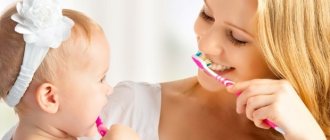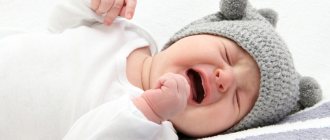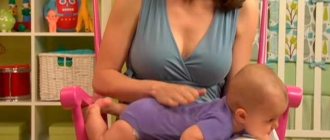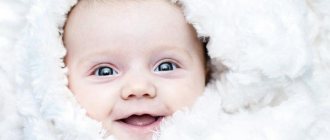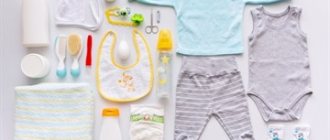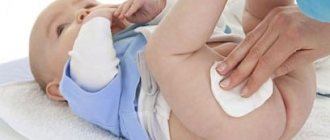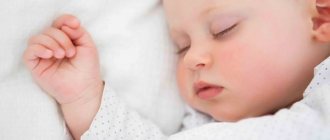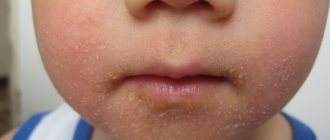Newborns are often bothered by a runny nose. Sometimes it is physiological in nature and does not require treatment. In some cases, medical supervision is required. To alleviate the baby’s condition and restore his breathing, you need to know how to remove snot from a baby. Following the recommendations will help your baby get rid of congestion quickly and painlessly.
Newborn
Causes of a runny nose in a newborn
A runny nose in a newborn is a common occurrence. There are several reasons for the appearance of mucous discharge:
- Adaptation of the baby to the environment. The mucous membrane gets used to the new environment, reacting with the appearance of snot. They are liquid and transparent, the baby’s well-being does not deteriorate, and the body temperature remains normal. This condition is called physiological runny nose. It does not require treatment and goes away on its own. Usually appears in the first months of a baby’s life and lasts on average from a week to three months;
- The air in the room is too dry and too polluted. Mucus can also appear when there is a lot of dust in the room, or there is tobacco smoke. Children, like adults, react to smells, perfumes or flowers;
- Viral infection. Snot performs protective functions. They fight the harmful effects of viruses, protecting the body from their spread. There is no need to treat them, just maintain their condition so that they remain transparent and liquid. When they thicken, they lose their beneficial properties. If they turn yellow or greenish, it means there is a bacterial infection. With this development of events, treatment must be started to prevent complications.
Note! Mucous discharge is not always dangerous and requires medical treatment. Sometimes it is enough to maintain the necessary conditions in the room and give the baby more to drink so that the condition improves.
If the baby’s health worsens, he becomes capricious, systematically refuses to eat, his temperature rises, or other symptoms appear, you need to call a doctor.
Medical examination
A runny nose can lead to the development of:
- otitis;
- tracheitis;
- bronchitis;
- pneumonia.
In young children, the infection quickly develops and spreads into the respiratory tract, especially if the child constantly sniffles and the discharge goes down into the throat.
Note! Snot in the nasopharynx in infants irritates the mucous membrane and causes coughing, sometimes leading to vomiting. Self-medication if the child does not get better is not worth it.
Consulting a doctor will never be superfluous. He will tell you what to do if your baby has snot in the nasopharynx. He will advise you to continue the treatment you have started or prescribe a new one.
What is strictly forbidden to do when cleaning a toddler’s nose
If there is a risk of damage to the mucous membrane, doctors prohibit the use of cotton swabs. Especially if they are made at home. And cotton wool wrapped around a match can stay in the baby’s nose.
If there are dry crusts in the spout, there is no need to clean them with an aspirator.
During this procedure, you should keep everything at hand and not leave your child’s side for even a minute. After all, it may happen that the mother turns away literally for a moment, and the baby has already fallen. If the mother needs to move away, it is better to put the baby in a crib or pick her up.
Now we know how to clean a newborn's nose. Every mother should be very attentive to the health of her baby. You can’t ignore sniffling and nasal congestion, because this condition can be a harbinger of a chronic disease.
On the other hand, there is no need to get into your little one’s nose out of ordinary curiosity and for the purpose of prevention. As long as nothing bothers him, there is no need to further injure the mucous membrane. Especially if you understand that this makes the baby nervous.
Should I clean my newborn's nose?
A newborn is just getting used to a new life and learning new things. Congestion makes breathing much more difficult. It is not always possible for a baby to reflexively begin to breathe through the mouth if it is not possible through the nose. Therefore, with a severe runny nose, a child may begin to choke.
With a stuffy nose, the baby cannot eat or drink normally. He becomes moody and restless. Lack of hygiene in the nasal cavity leads to the formation of crusts, which are more difficult to get rid of. Therefore, it is imperative to clean a newborn’s nose. The main thing is to remove snot, following the recommendations, so as not to harm the little person.
How often to clean your baby's nose
The baby's nose needs to be cleared when breathing is extremely difficult. If the procedure is carried out correctly, the child will experience relief and his condition will improve. It is enough to do this three times a day, if necessary, increase to five, but no more.
Nasal hygiene includes:
- Softening crusts and secretions using saline solutions;
- Suctioning snot. There are several ways, everyone can choose the most suitable one for themselves.
Snot Suction
How to rinse and clean your nose
Before clearing your newborn's nose, you need to drip a saline solution into each nostril. The main thing is not to use sprays. During their action, the product is sprayed with high pressure. As a result, fluid can enter the inner ear, which can lead to the development of otitis media. There are sprays called "soft showers". They do not irrigate the nasal cavity with a stream, but rather spray liquid. They can be used with caution on children older than three months.
You can prepare the rinsing solution yourself by mixing water with table salt. It is better not to experiment on newborns, as it will not be possible to create a sterile product. The cost of saline solution is low, after opening it can be stored until the expiration date, observing the prescribed conditions.
Note! Salt can remove excess fluid and relieve swelling. Products based on it are not addictive and are considered safe.
How to suck out snot with an aspirator
An aspirator is a useful invention that helps quickly get rid of mucous discharge from the nose. The mechanism of different types of devices is slightly different, which affects the efficiency of operation:
- A mechanical aspirator is the most gentle. The traction force is regulated by the baby's parents. The tip is inserted into the baby's nostril. It is connected by a tube to a mouthpiece, which the baby’s mother or father takes into the mouth and sucks in the contents of the nose. Using such an aspirator is not very hygienic. Parents can become infected from the baby, because they are in direct contact with him, drawing in snot, even though the device has a separator;
- The electronic aspirator runs on batteries. You just need to place the nozzle in the nostril of the sick child and turn on the device. Its action is enough to relieve the baby of secretions that are nearby. He will not be able to pull out thick snot from distant sections;
- A vacuum aspirator is an attachment to a vacuum cleaner. With its help, you can get out thick mucus, completely clearing the nasal passages. Removal of secretions occurs almost instantly; the snot ends up in a special reservoir, making it easier for the baby to breathe.
We carry out the manipulation using turundas and sticks
Turunda, in fact, are ordinary flagella. How to clean a newborn's nose with a cotton swab? Carefully insert it into the baby's nasal passage, turn it and pull it out. Do this until the flagellum remains clean. Now you can move on to the second nostril. To make the process easier, you can drip warm oil onto the flagella.
Now we know how to clean a newborn’s nose with a flagellum. Use chopsticks in exactly the same way, changing them regularly.
If you want to use a pear, then it should be sterilized by scalding with boiling water. When it has already dried and cooled down, release the air from it, insert it into the nasal passage and release it so that it can absorb the mucus. Now the product must be rinsed, if necessary, repeated or begin to perform the same actions from the second nostril. This entire procedure must be carried out with extreme caution so as not to blow air into the baby’s nose.
If you want to use an aspirator, you should sterilize the device, adjust the suction force by placing the tip on your own palm. Insert a tube into the baby's nasal passage, direct it to the back wall of the larynx and start the device. Most often, the aspirator tubes are transparent so that it is possible to assess how clean the nose is. The same actions are performed from the second nostril. At the end of the procedure, the child’s nasal passages are lubricated with warmed baby oil. This relieves irritation and keeps the results longer.
What not to do when cleaning your nose
When cleaning your nose, do not use cotton swabs. Any careless movement can lead to injury. You should always check whether the aspirator nozzles that are inserted into the baby’s nostrils are safe and do not have sharp or hard elements.
It is important that the child is not afraid of the procedure, so it is better to choose a time when the child is in a good mood. If he is upset or depressed, it is better to clean his nose later.
Baby is not in the mood
Important! Breast milk should not be dripped into children's noses. Of course, its benefits cannot be overestimated, but not in this case. Milk is a breeding ground for bacteria. Therefore, instilling it in case of a runny nose will only worsen the baby’s well-being.
If a child’s temperature rises, the nature of the discharge changes, it becomes thick, a green tint appears, you need to seek help from a pediatrician. Only a doctor, based on an examination of the patient and the mother’s observations, will be able to make the correct diagnosis and prescribe treatment.
How to clean your baby's nose: sticks and pears
Any method of influence will depend on which tool is chosen. To understand which of the variety of approaches will be the most optimal, you should assess in advance the degree of nasal congestion. What and how to clean a newborn’s nose so as not to harm the baby? As a rule, the following products are used at home:
- Cotton swabs: it is better to choose them on a plastic basis, not taking into account the wooden one. They have an average degree of purification, and the risk of damaging the mucous membrane of the little one is quite high. If mom acts carelessly, instead of cleaning her nose, she will push the mucus much deeper.
- Syringes or pears: these instruments should have soft tips made of silicone or rubber so as not to damage the delicate mucous membrane. The degree of cleaning is quite good, and they do not injure tissue.
How to prevent boogers
To prevent crusts from forming in the baby, you need to regularly moisturize the nasal mucosa. First of all, Komarovsky, a famous pediatrician, recommends maintaining comfortable conditions at home:
- temperature 20-22 degrees;
- humidity within 50-70 percent;
- do wet cleaning every day, do not forget about ventilation;
- get rid of carpets and other dust collectors.
When a runny nose appears, you need to help the discharge remain liquid and transparent. Drinking plenty of fluids and rinsing your nose will help with this. Daily moisturizing of the mucous membrane will prevent the discharge from drying out and crusts and boogers from forming.
Hygiene of a newborn’s nose is one of the responsibilities of parents. The baby is not able to get rid of mucous secretions on its own. Therefore, the task falls on the shoulders of moms and dads. There are several ways to help your baby. The main thing is to carefully study the recommendations and not self-medicate when the baby’s condition worsens.
